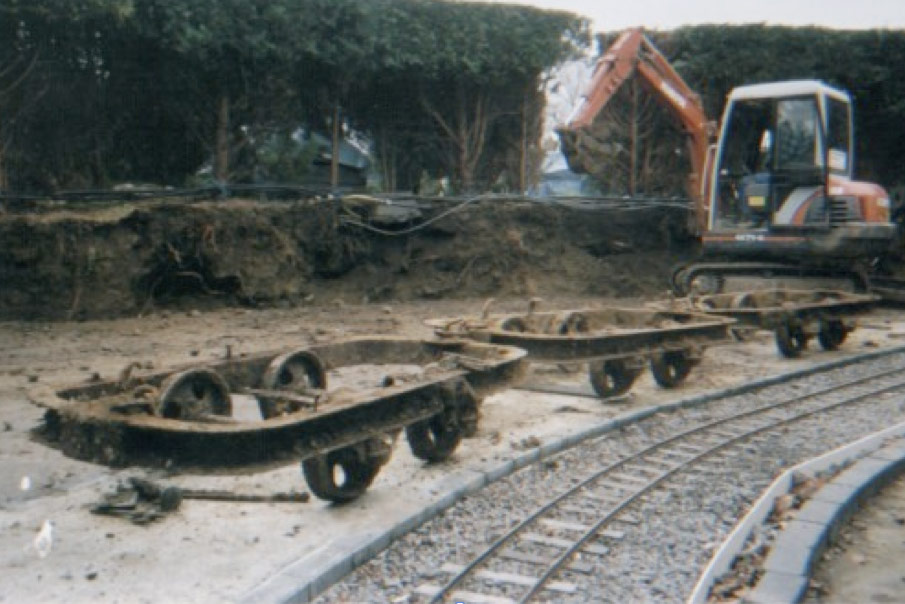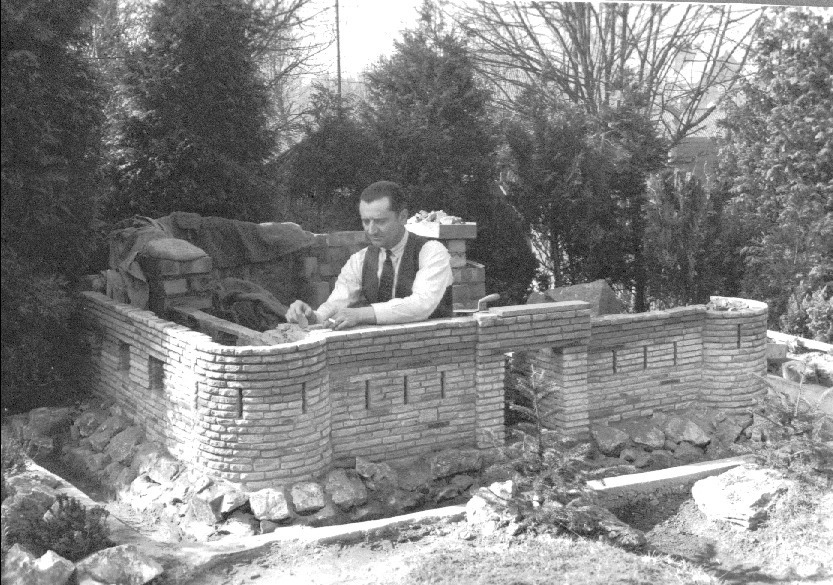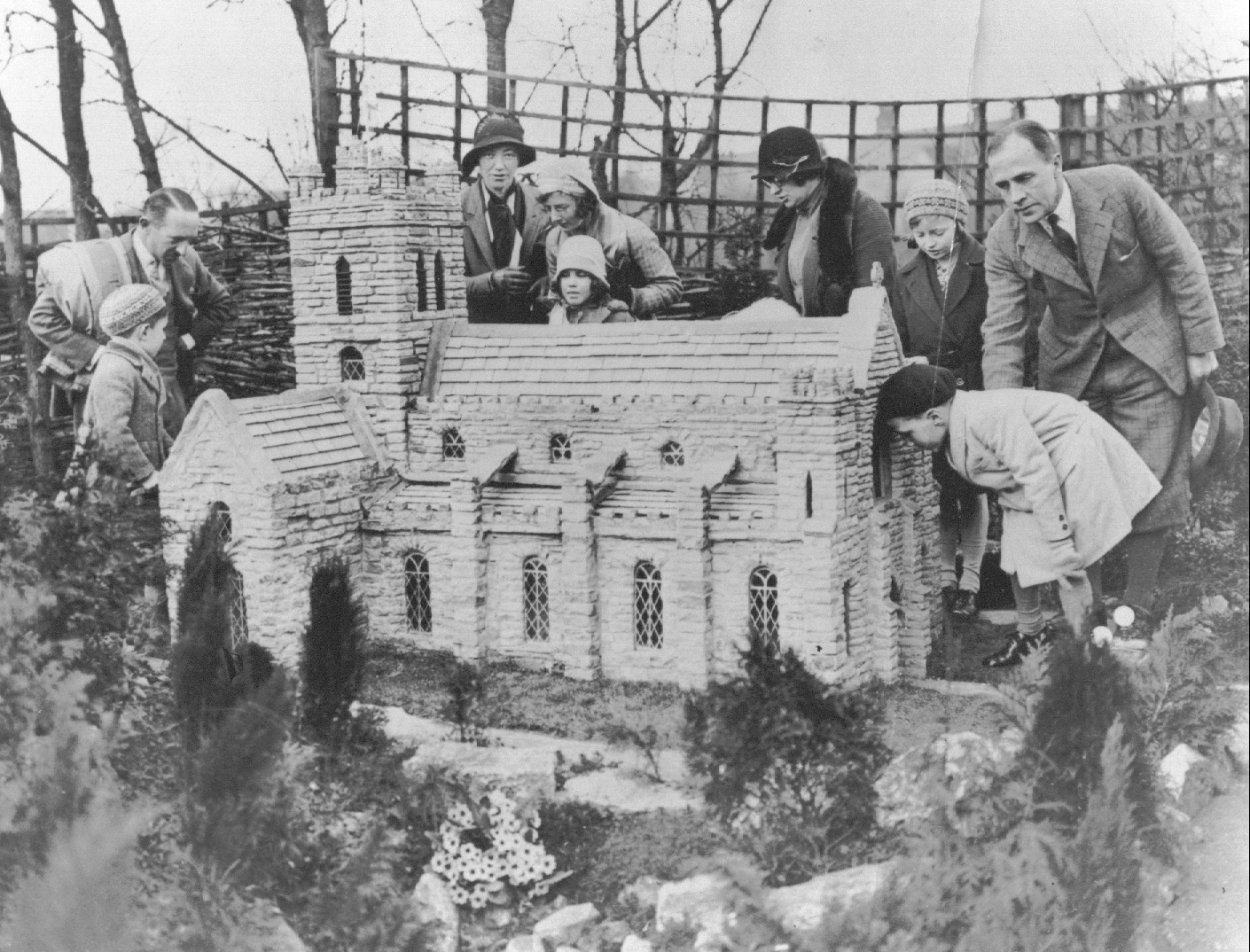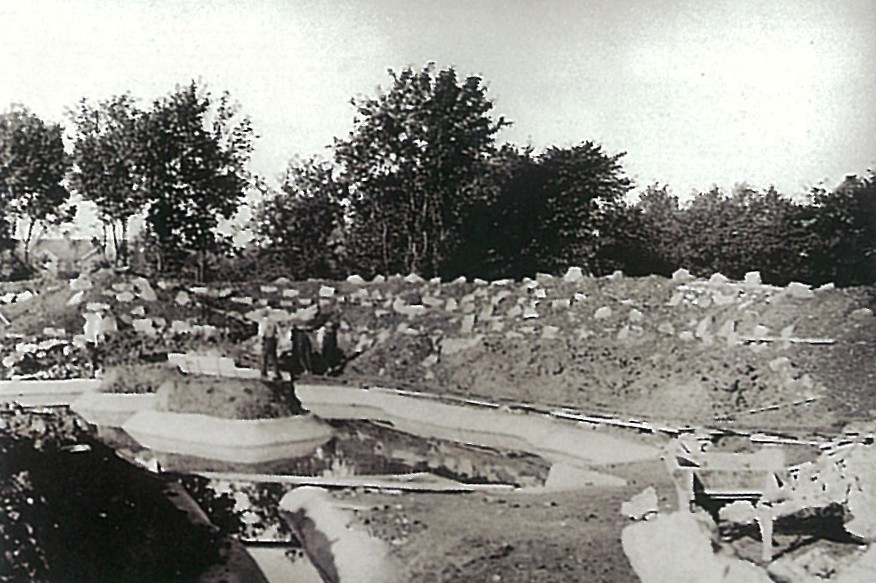History
In 1927, Mr Roland Callingham, a London accountant, instructed gardeners to dig a swimming pool at his home here in Beaconsfield. The pool and tennis courts were used for garden parties, attended by the high society of London. Politicians, minor royals, aristocrats and the movers and shakers of the era would come out for a breath of country air.
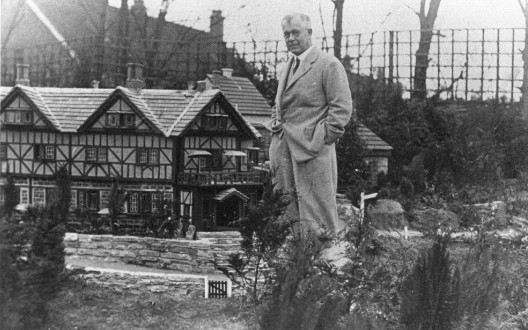
In 1928, Mrs Callingham made a short but moving speech which suggested that either the indoor model railway went, or she did. The model railway moved outdoors.
Mr Callingham commissioned the famous model railway firm of Bassett-Lowke to build the largest outdoor Gauge 1 garden railway in the UK. In his spare time Mr Callingham, with his head gardener Tom Berry, built some model houses to complement it; the pool then gained two islands and a pier. When summer evenings grew too dark to play tennis, party guests would wander over to play trains, see the illuminated houses and apparently were even known to swim in the ‘sea’. What-ho!
Encouraged by friends and staff, Mr Callingham planned a rural landscape surrounding the pool, railways and rockeries with boundless enthusiasm and unending passion for detail. His excitable team, including local schoolboys, turned their hands to modelmaking and the construction of Bekonscot Town itself – making it something of a post-school club for those inter-war years. Rather like playing ‘The Sims’ on Playstation or indeed our very own ‘Virtual Village’ – but building their own world for real, brick by brick and by hand.
Local buildings and personal favourites of the staff provided much of the village’s inspiration, for all were constructed from memory, photos or imagination. Bekonscot’s founder was never concerned with precision: it was, and always will be, eccentric, fun and full of character. It was never been made to be taken seriously.
During the early years, a small 2ft gauge railway was built using second-hand equipment around the site. The track and tipper wagons are thought to have come from the contractors who built the Great Central Railway through Beaconsfield and sold the construction machinery in High Wycombe circa 1908. The narrow gauge railway was used to move spoil around Bekonscot during construction, and later to move plants and ice creams around to serve tourists. The wagons were later buried to provide hardcore for a retaining wall – and we dug them up by mistake in 2001 when extending the Bekonscot Light Railway. Whoops. You can now see all three scattered around the Bekonscot site on display. These are thought to be built by Hudsons.
